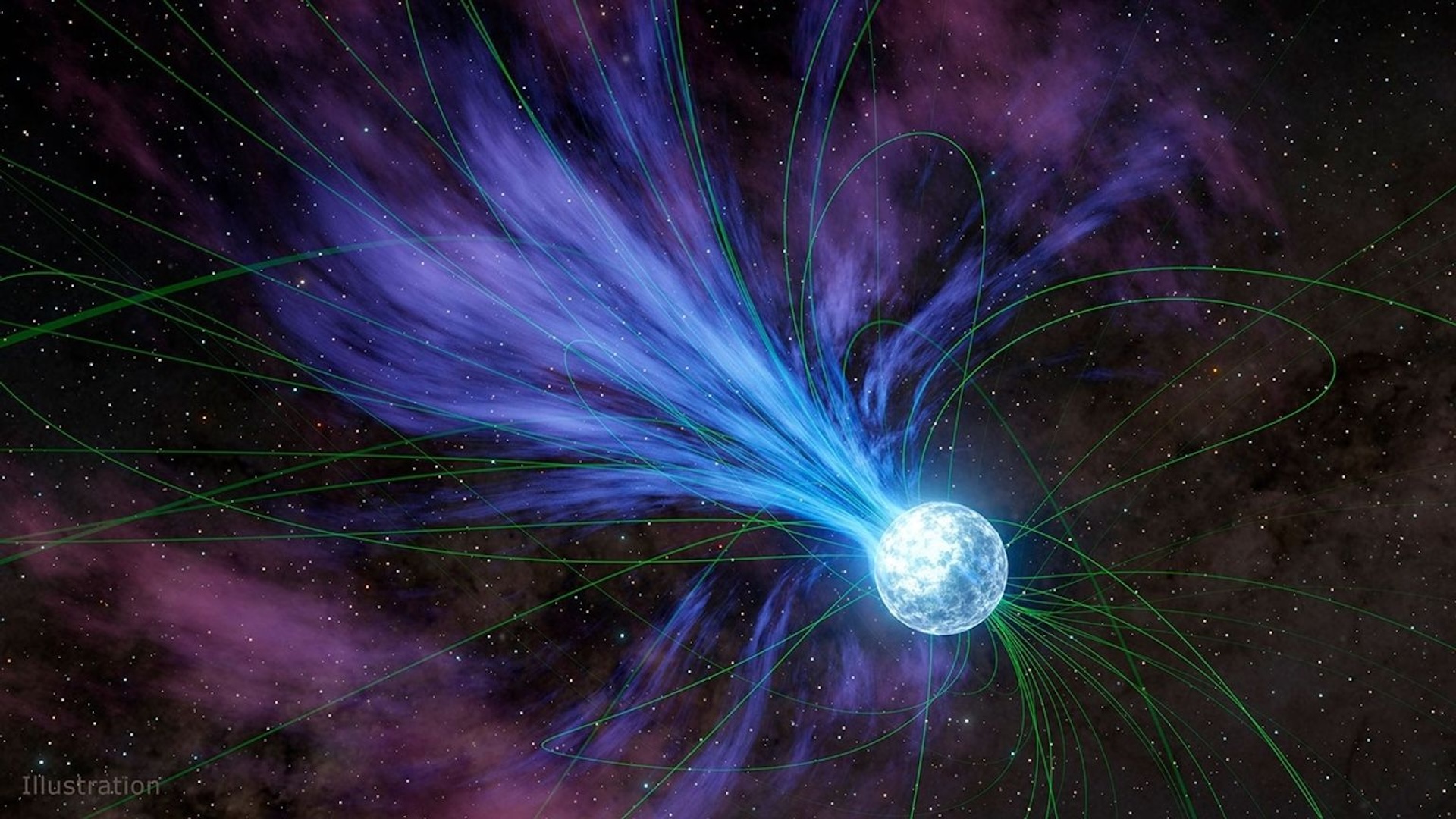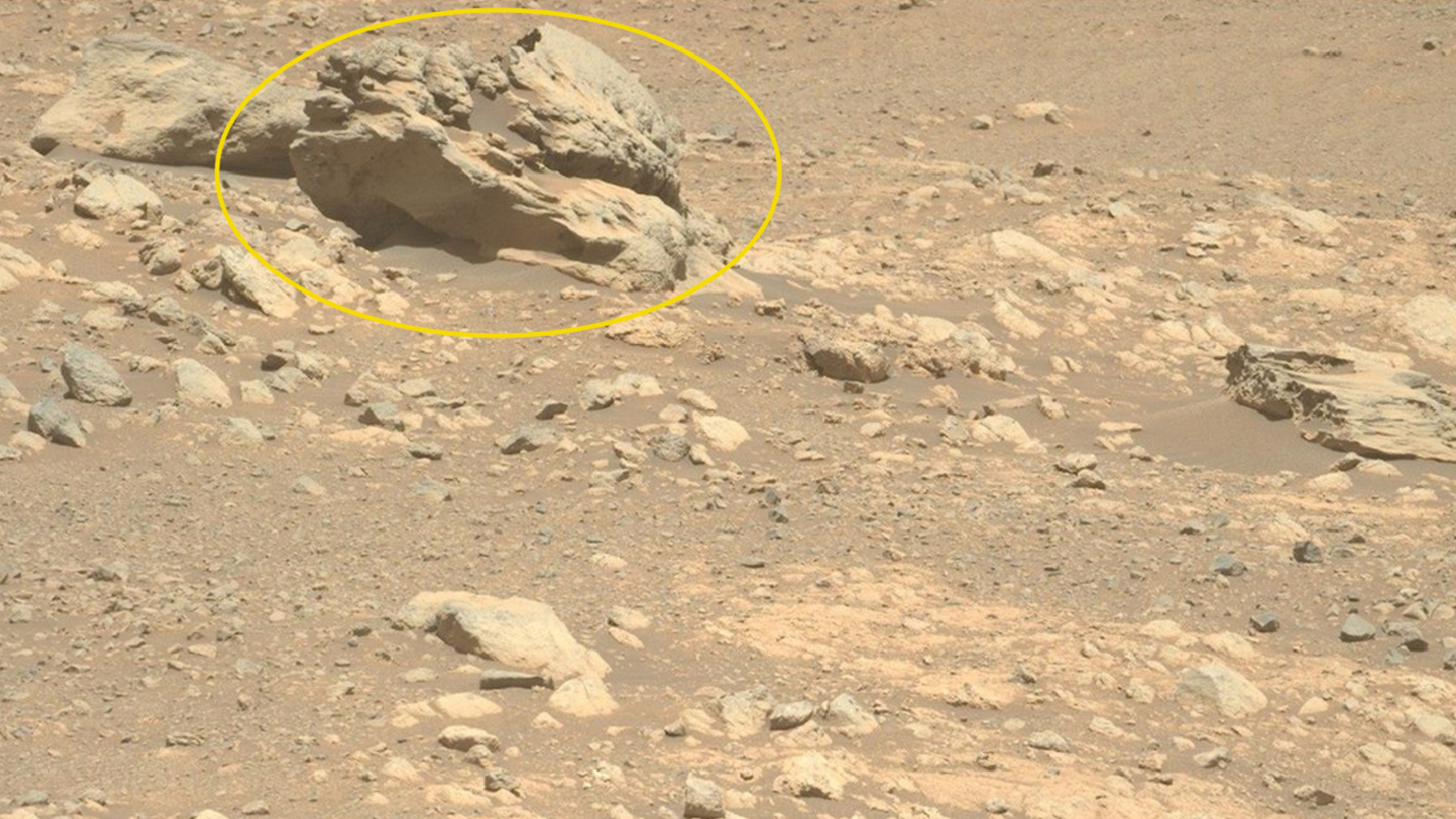Oldest gold in the universe may finally have an explanation: 'It's answering one of the questions of the century'
Dead stars may have started churning out vast amounts of gold much earlier in the universe than previously thought, a new study hints. Powerful magnetar flares may be the reason.

Scientists may have finally worked out where gold came from in the early universe.
In a new study, researchers revealed that powerful flares originating from neutron stars with a strong magnetic field, called "magnetars," may have started forging gold not long after the Big Bang — significantly earlier than previously thought possible. The researchers described their findings in a study published Tuesday (April 29) in The Astrophysical Journal Letters.
Scientists have long been puzzled by the origins of the universe's vast amounts of gold. Researchers already knew that mergers of collapsed stars and black holes discharge heavy metals, but in 2017, for the first time ever, astronomers observed the merger of two superdense stellar corpses known as neutron stars. The cataclysmic collision, which happened 130 million light-years away, emitted a flash of light that contained signatures of heavy metals, including platinum and staggering amounts of gold.
But while the 2017 event accounted for some of the universe's gold abundance, it couldn't explain how gold and heavy metals formed in the universe's early days, because not enough time had passed for neutron star mergers to occur.
Now, scientists think they can finally explain how gold and other heavy elements were first created and distributed in space.
"It's answering one of the questions of the century," study co-author Eric Burns, an assistant professor of physics and astronomy at Louisiana State University, said in a NASA statement.
Related: Hubble watches neutron stars collide and explode to create black hole and 'birth atoms'
Get the world’s most fascinating discoveries delivered straight to your inbox.
Forged by 'extreme explosions'
Magnetars have existed since the early days of the universe, and the study's authors estimate that these structures may have contributed up to 10% of all elements heavier than iron in the Milky Way, according to the statement.
The researchers used 20-year-old data from NASA and European Space Agency (ESA) telescopes to find the universe's hidden source of gold and heavy metals. They narrowed their search to magnetars based on the results of a 2024 study, which found that magnetar giant flares — bursts of radiation released during "starquakes" — can eject material, including heavy metals, from the crust of neutron stars and into space.
The last magnetar giant flare observed from Earth was in 2004. Scientists at the time noticed a small gamma ray signal from the flare, "but nobody had any conception of what it could be," Burns said.
It turns out, this small signal mirrors signals that scientists would expect to see if a magnetar created and threw out heavy metals in a giant flare.
Magnetar giant flares produce an enormous amount of high-energy radiation, which could be the key to forging gold and other elements heavier than iron, according to the researchers. Specifically, the authors of the new study think that the extremely high density of neutrons in a giant flare could transform light atomic nuclei into much heavier ones, triggering multiple nuclear decay reactions in a single atom at once.
Atoms carry protons and neutrons, which determine an element's identity and mass, respectively. Hydrogen is the simplest atom on the periodic table, because it has only one proton. Helium, the second-simplest element, has two protons; lithium has three, and so on.
Under certain conditions, atoms can absorb an extra neutron, which increases the mass of the atom, destabilizing it and sparking a nuclear decay reaction that converts this neutron into a proton. When that happens, the atom that absorbed the neutron has an extra proton, which changes its identity and moves it up the periodic table. Hydrogen becomes helium, helium becomes lithium, and so forth.
Magnetic giant flares host a turbocharged version of this process, because the huge density of neutrons can cause atoms to absorb several of them at once, according to the researchers. Thus, a relatively light atom may suddenly transform into a much heavier one, leading to the rapid formation of heavy metals, including gold.
"It [is] very cool to think about how some of the stuff in my phone or my laptop was forged in this extreme explosion [over] the course of our galaxy's history," study lead author Anirudh Patel, a doctoral student in astrophysics at Columbia University in New York, said in the statement.
The next step for the researchers is to look for further clues in older magnetar giant flare data. NASA's Compton Spectrometer and Imager (COSI) mission will also follow up on the results when it is launched, which is expected in 2027. COSI is a wide-field gamma ray telescope that will study energetic phenomena in the cosmos, including magnetar giant flares.

Sascha is a U.K.-based staff writer at Live Science. She holds a bachelor’s degree in biology from the University of Southampton in England and a master’s degree in science communication from Imperial College London. Her work has appeared in The Guardian and the health website Zoe. Besides writing, she enjoys playing tennis, bread-making and browsing second-hand shops for hidden gems.
You must confirm your public display name before commenting
Please logout and then login again, you will then be prompted to enter your display name.
